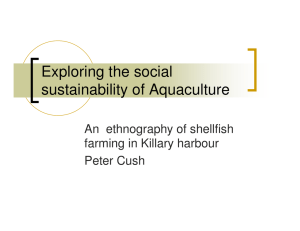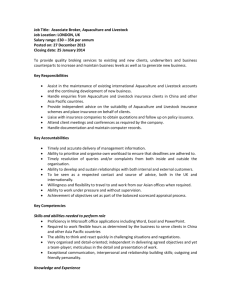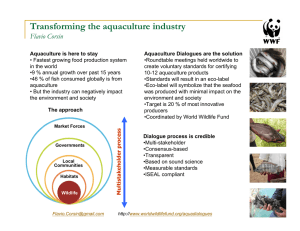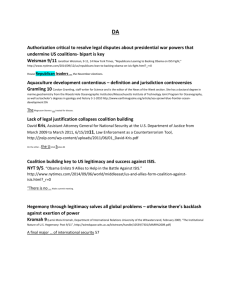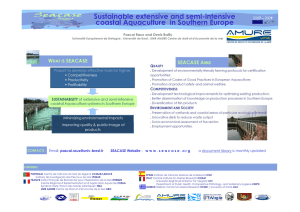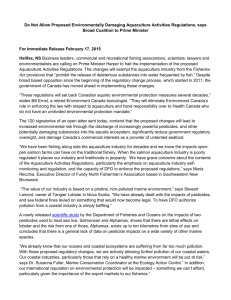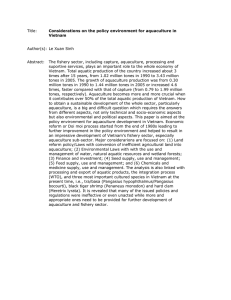Chrisbio
advertisement
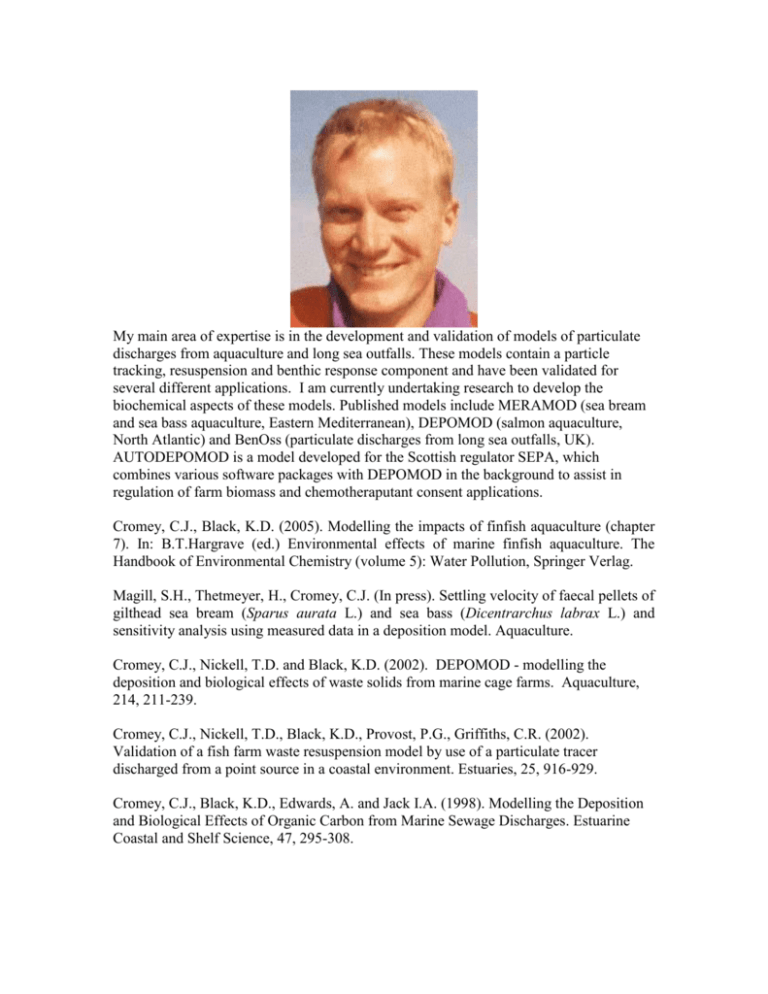
My main area of expertise is in the development and validation of models of particulate discharges from aquaculture and long sea outfalls. These models contain a particle tracking, resuspension and benthic response component and have been validated for several different applications. I am currently undertaking research to develop the biochemical aspects of these models. Published models include MERAMOD (sea bream and sea bass aquaculture, Eastern Mediterranean), DEPOMOD (salmon aquaculture, North Atlantic) and BenOss (particulate discharges from long sea outfalls, UK). AUTODEPOMOD is a model developed for the Scottish regulator SEPA, which combines various software packages with DEPOMOD in the background to assist in regulation of farm biomass and chemotheraputant consent applications. Cromey, C.J., Black, K.D. (2005). Modelling the impacts of finfish aquaculture (chapter 7). In: B.T.Hargrave (ed.) Environmental effects of marine finfish aquaculture. The Handbook of Environmental Chemistry (volume 5): Water Pollution, Springer Verlag. Magill, S.H., Thetmeyer, H., Cromey, C.J. (In press). Settling velocity of faecal pellets of gilthead sea bream (Sparus aurata L.) and sea bass (Dicentrarchus labrax L.) and sensitivity analysis using measured data in a deposition model. Aquaculture. Cromey, C.J., Nickell, T.D. and Black, K.D. (2002). DEPOMOD - modelling the deposition and biological effects of waste solids from marine cage farms. Aquaculture, 214, 211-239. Cromey, C.J., Nickell, T.D., Black, K.D., Provost, P.G., Griffiths, C.R. (2002). Validation of a fish farm waste resuspension model by use of a particulate tracer discharged from a point source in a coastal environment. Estuaries, 25, 916-929. Cromey, C.J., Black, K.D., Edwards, A. and Jack I.A. (1998). Modelling the Deposition and Biological Effects of Organic Carbon from Marine Sewage Discharges. Estuarine Coastal and Shelf Science, 47, 295-308.

